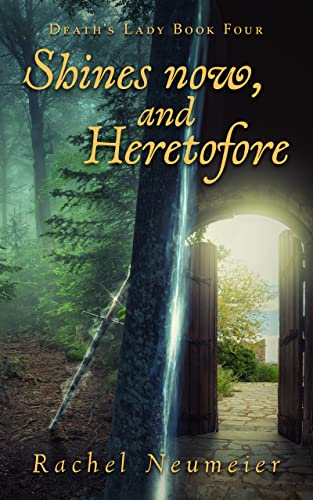Keeping the pages turning
A post at Kill Zone Blog: The Nearest Exit May Be Behind You
This is a post about chapter breaks and how to keep the reader turning pages. The recent post here, where I linked to The Intern’s analysis of The Hunger Games, and of course the Would You Turn the Page posts are relevant here. But this post by Odell is a little different. It’s about looking for good places to break a chapter from the author’s point of view.
Keeping readers turning pages is a big thing for authors. Who doesn’t love a message saying “I stayed up all night reading your book”? …
Very true! Everyone loves that!
… Readers look for reasons to put the book down. They have chores, or work. Kids. Schedules. Bedtimes. Chapter breaks are logical stopping points. Long before I started writing, I learned that if I was going to get any sleep, I had to stop reading mid-page. A former critique partner referred to these endings as landings. Others have called them hooks. What makes a reader say Okay, I’ll read a little longer?
The author of this post — Terry Odell — goes on:
When I went back and added breaks to my endless tome, I discovered that I’d ended every chapter or scene either with someone driving away or going to sleep. They were, to my mind, logical stopping places. But not exactly page-turners. More often than not, the best exit was behind where I’d put my break. I’d gone too far, feeling the need to wrap things up.
I agree that it’s natural to end a chapter where someone goes to sleep. Sometimes I do that, though I realize it’s a natural place for the reader to stop as well. I kinda think at least one chapter in Shines Now ends that way. There’s nothing actually wrong with ending a chapter like that, and in fact the question of “But what happens after he wakes up???” can be pretty compelling, imo.
Still, I grant, it may be useful to end the majority of chapters with a cliffhanger of some type. Not necessarily a death-defying situation the way Zelazny so famously did here, because that’s fine for an experimental novel and maybe for a super-high-tension thriller, but that kind of thing can get tiring for your reader. But if not that kind of cliffhanger, perhaps with a question that needs an answer or a puzzle that needs a solution; anything that prompts the reader to think And then what?
Let me see. Shines Now is pretty short; just 78,000 words. Twelve chapters. How does each chapter end? Let me take a look.
Chapter 1 — a cliffhanger, with, ha, an actual cliff. That’s a bit funny in this context.
Chapter 2 — a more restful break, though no one actually goes to bed.
Chapter 3 — a decision point followed by a shift to the next scene
Chapter 4 — a shift from one scene to the next; and here I supposed I’d better specify that I mean a scene occurs largely in one time and place and that any major shift in place or particularly in time means you’ve moved to another scene.
Chapter 5 — a shift from one scene to the next
Chapter 6 — a decision point followed by a shift to the next scene
Chapter 7 — a time-has-passed shift from one scene to the next; we skip lightly across most of a month.
Chapter 8 — a major decision point
Chapter 9 — a time-has-passed shift from one scene to the next; in this case we skip over several days.
Chapter 10 — a fraught encounter is followed by a pause as we move to the next scene.
Chapter 11 — a single tense sentence shoves the reader hard into the next scene. This is not a place where anyone is going to stop. We’re too close to the end of the story and the transition from Chapter 11 to Chapter 12 is filled with tension.
Okay! So, I’m certainly not going to fiddle with chapter breaks at this point. It’s interesting to me to realize that I had people go to bed pretty often, but that’s not where I broke chapters. Scenes, yes, signaled by line breaks. But not chapters. Because this is a short novel, there are several places where I skipped over days or weeks. Those are very natural places to break a chapter, even though they are low-tension places for a break.
I see I have frequently set chapter breaks right after an important decision. A decision point works, I think, like a cliffhanger, in that the decision poses a question: Now that this choice has been made, now that the protagonist has committed to this course of action, what happens next? Ditto for a fraught conversation or encounter: now that this important encounter has taken place, what happens next?
It’s certainly interesting to see where I tend to put breaks. I think I may try this during the revision process next time: ask what is happening at each chapter break and perhaps shift breaks around a bit as a result.
As you know, Shines Now is available for preorder for the next few days! It’ll go live on the 21st.
 Please Feel Free to Share:
Please Feel Free to Share:







The post Keeping the pages turning appeared first on Rachel Neumeier.



